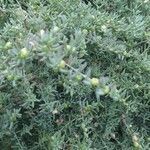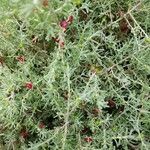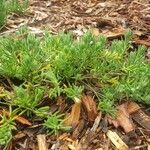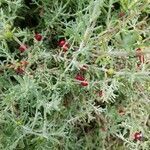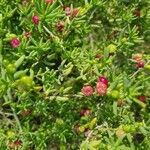A small spreading shrub. It grows 0.3-1 m tall and spreads 0.5-1.5 m wide. The branches are slender and woody. They are hairy and straggling. The leaves are 0.8-2 cm long by 0.1-0.2 cm wide. They are thin and cylindrical. They are succulent and bluish-green. They are hairy. The flowers are small and occur singly in the axils of leaves. The fruit berries are 0.5 cm across. They change colour as they mature. Some varieties occur.
